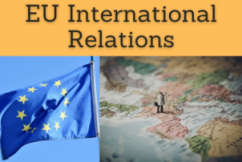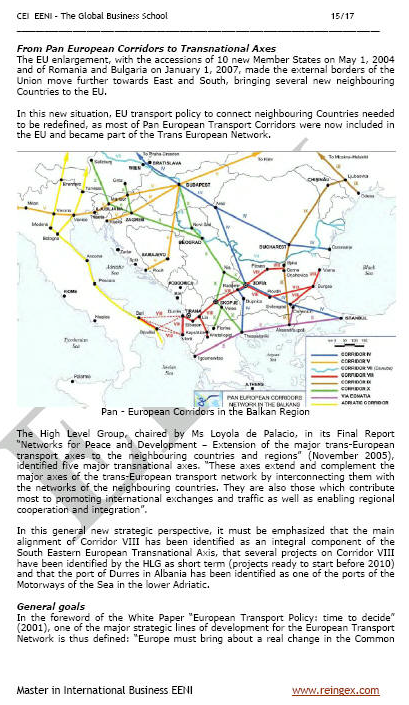Central European Initiative (CEI) Albania, Romania

Macedonia, Moldova, Montenegro (Central European Initiative)
- Introduction to the Central European Initiative (CEI)
- Funds and Instruments of the Central European Initiative
- Areas of Activity of the Central European Initiative
- Case Study: the Pan European Corridor VIII
The objectives of the subject “Central European Initiative (CEI)” are the following:
- To understand the purposes and functions of the Central European Initiative
- To know the areas of cooperation of the Central European Initiative
- To analyze the Pan-European Corridor VIII

The Subject “Central European Initiative (CEI)” belongs to the following Online Programs taught by EENI Global Business School:
Doctorate: European Business, World Trade.
Masters: International Business, Foreign Trade.
Courses: EU International Relations, Orthodoxy and Business.

Languages:  or
or  Comunidad Estados Independientes
Comunidad Estados Independientes  Commonwealth of Independent States.
Commonwealth of Independent States.
Credits of the Subject “Central European Initiative”: 1 

Masters adapted to the Students from the Central European Initiative (CEI):  Belarus, the
Belarus, the
 EU,
EU,  Albania,
Albania,  Bosnia,
Bosnia,
 Serbia,
Serbia,
 Montenegro,
Montenegro,
 Moldova, and
Moldova, and  Ukraine.
Ukraine.

Central European Initiative (CEI).
The Central European Initiative (CEI) is the largest regional cooperation forum among eighteen member economies in Central, Eastern, and South-Eastern Europe.
The objective of the Central European Initiative (CEI) is to encourage the political and socio-economic development in the region of the Central European Initiative intended at averting new division gaps in Central Europe.
The region of the Central European Initiative comprises 2.4 million km² with a population of 260 million people.
The Members of the Central European Initiative (CEI) are:
- European Union countries: Austria, Bulgaria, Croatia, Czech Republic, Hungary, Italy, Poland, Romania, Slovakia, and Slovenia
- Non-European Union member economies: Albania, Belarus, Bosnia and Herzegovina, Macedonia, Moldova, Montenegro, Serbia, and Ukraine
The actual EU enlargement process highlights the position of the Central European Initiative (CEI) as a communication channel between the Central European Initiative, the EU, and the non-EU countries.
The Central European Chambers of Commerce Initiative acts as a regional forum for cooperation among the Chambers of Commerce in all the member economies of the Central European Initiative.
Sample - Central European Initiative (CEI):


(c) EENI Global Business School (1995-2024)
We do not use cookies
Top of this page



